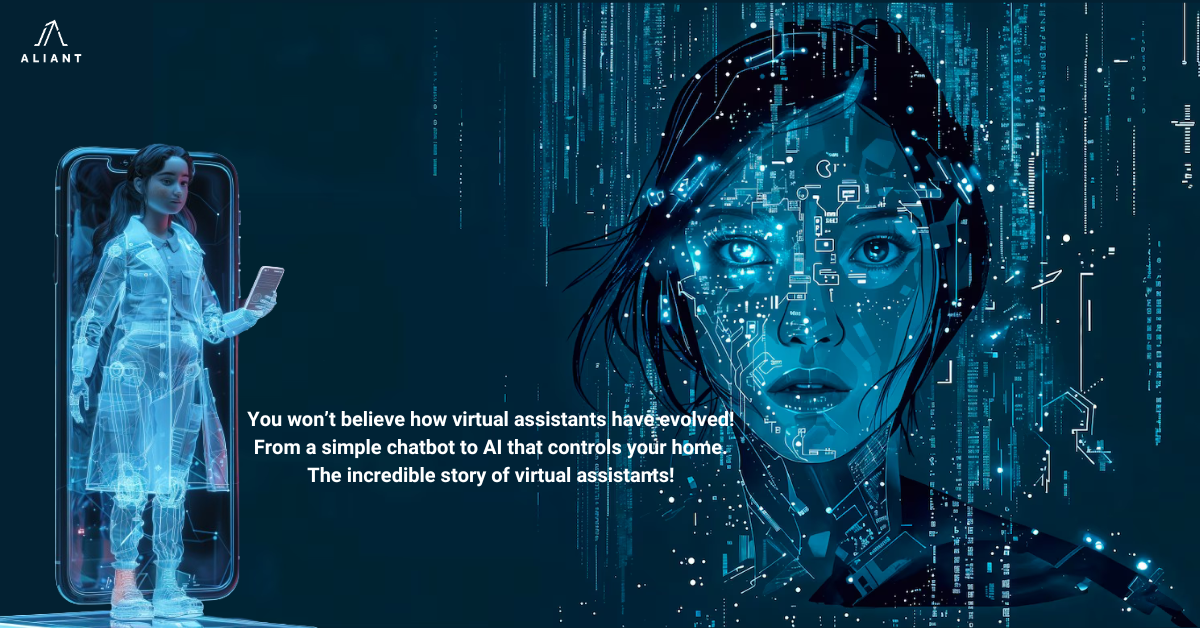Did you know that the first virtual assistant dates back to the 1960s? See how it has evolved to this day!
Virtual assistants have become an integral part of modern life, revolutionizing the way we interact with technology. From the first chatbot, ELIZA, developed in the 1960s, to Siri, Alexa and Google Assistant, this evolution demonstrates the impressive advances made in the field of artificial intelligence (AI). Today, these assistants are used in mobile phones, smart home devices, and even in areas such as health and education.
ELIZA: the first virtual assistant, was developed in 1966 by Joseph Weizenbaum at the Massachusetts Institute of Technology (MIT). It was one of the first artificial intelligence programs capable of simulating a human conversation by using a set of predefined rules.
ELIZA imitated a psychotherapist, taking the user's lines and reformulating them in the form of questions. For example, if the user said: "I feel sad", ELIZA could respond with "Why do you feel sad?". This strategy, although simple, was enough to make users believe that they were interacting with an intelligent entity.
Even though ELIZA did not truly understand what the user was saying, this chatbot demonstrated the potential of human-machine interaction, inspiring the development of future virtual assistants.
The evolution of virtual assistants: From ELIZA to the present, virtual assistants have evolved considerably, becoming increasingly sophisticated. Among the most important stages of this evolution are:
A.L.I.C.E. (Artificial Linguistic Internet Computer Entity) – Developed in the 1990s, A.L.I.C.E. used AIML (Artificial Intelligence Markup Language) technology to structure conversational responses. It was a significant step towards modern chatbots.
Siri (2011) – Apple revolutionized the virtual assistant industry with the introduction of Siri, the first virtual assistant integrated into a smartphone. Siri was able to respond to voice commands, perform tasks such as setting alarms and sending messages, using advanced voice recognition technology.
Alexa (2014) – Amazon launched Alexa, a virtual assistant designed to be used with Echo smart speakers. Alexa popularized the concept of the "smart home", allowing users to control connected devices through voice commands.
Google Assistant (2016) – Google introduced a virtual assistant with advanced conversational capability, capable of providing accurate answers, performing real-time translations, and controlling smart devices connected to Google Home.
The Role of AI in the Future of Human-Machine Interaction
Artificial intelligence continues to redefine human-machine interaction. Advanced models, such as OpenAI’s GPT-4o, enable more natural interaction, integrating text, audio, and image processing into a single system. These new technologies offer the ability to:
🔹Recognize and interpret user emotions;
🔹Generate more coherent and contextual responses;
🔹Automate complex tasks, such as scheduling meetings or drafting documents;
🔹Translate conversations in real time, facilitating global communication.
Virtual assistants will be increasingly integrated into diverse industries, such as:
Healthcare – where AI can provide medical recommendations, analyze symptoms, and facilitate remote consultations.
Transportation – virtual assistants will contribute to route optimization and the development of autonomous vehicles.
Customer service – chatbots will take over more and more interactions, providing instant support.
From ELIZA to Alexa and Siri, virtual assistants have evolved dramatically, becoming indispensable tools in our daily lives. As AI technology continues to advance, this interaction will become increasingly natural, personalized and efficient, reshaping the future of human-machine communication.
In the future, we can expect an even deeper integration of virtual assistants into everyday life. They will be able to anticipate users’ needs, offering proactive and personalized solutions based on machine learning and behavioral analysis. Also, emerging technologies, such as augmented reality and neural interfaces, will lead to an increasing fusion between humans and AI, allowing for more intuitive and natural control over smart devices.
Thus, virtual assistants will not only improve the efficiency of our interactions with technology, but will also contribute to the creation of an interconnected digital ecosystem, in which the boundaries between humans and machines will become increasingly blurred.
Sources
https://en.wikipedia.org/wiki/ELIZA?utm_source=chatgpt.com
https://medium.com/%40sitrakaforler/eliza-the-first-chatbot-1964-and-a-lesson-beyond-the-hype-8274ea56267e?utm_source=chatgpt.com




Comments